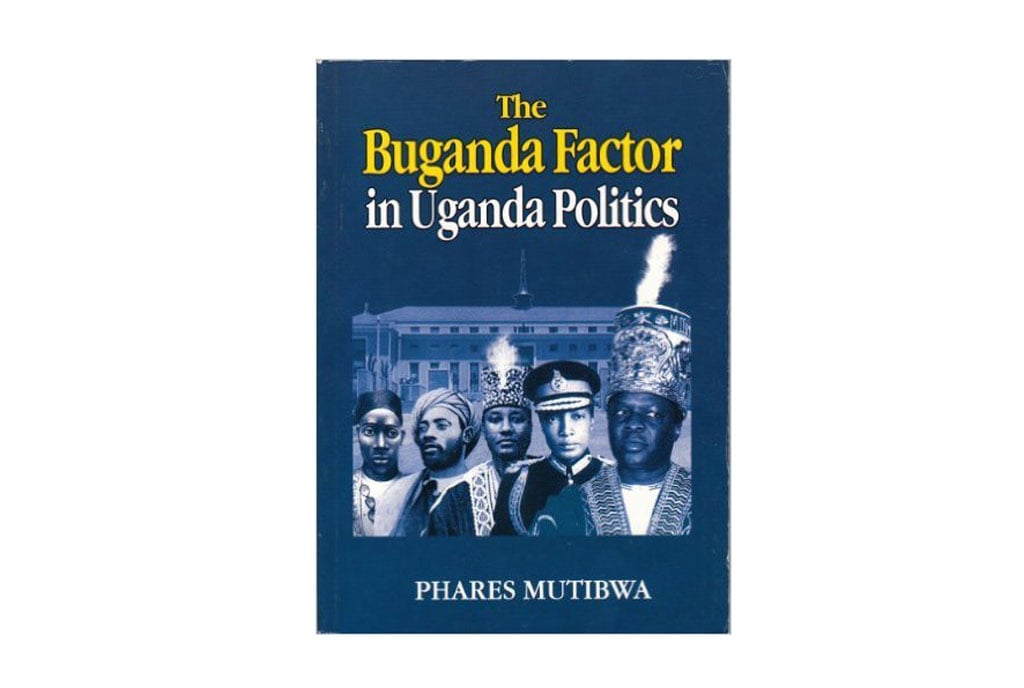Prime
Buganda’s place in the body politic examined

Book cover.
What you need to know:
- Book Title: The Buganda Factor In Uganda Politics
- Author: Prof Phares Mutibwa
- Year of Publication: 2008
- Pages: 266
- Price: Shs15,000
- Where: Aristoc Booklex
The Buganda Factor In Uganda Politics” by Prof Phares Mutibwa is a book whose simple sophistication lights a promethean fire in the darkness of all those who are put off by historical jargon.
Written in clear prose, Prof Mutibwa reveals how Buganda is central to the development and stability of Uganda.
Indeed, the British saw Buganda’s power when, in 1900, Sir Harry Johnson—the British Special Commissioner to Uganda—stated: “Here we have something like a million fairly intelligent, slightly civilised Negroes of warlike tendencies and possessing 10,000 to 12,000 guns. They are the only people for a long time to come who can deal a serious blow to British rule.”
Prof Mutibwa also reminds us that the Buganda Factor began with the name “Uganda”, which owes its origin to Buganda because the Swahili interpreters of the European colonialists found it difficult to pronounce the word Buganda.
Then these same colonialists, the professor reminds us, used the Buganda administration model to effectively administer the Uganda Protectorate. This administration was based on a hierarchy of chiefs namely, Katikkiro (the prime minister, who as the top of the hierarchy) and his ministers, followed by the ssaza (county) chiefs, gombolola (sub-county) chiefs and miruka (parish) chiefs.
For the legislature, there was a Lukiiko (Great Council or Royal Assembly), which consisted of all the ssaza chiefs and some other representatives nominated by the Kabaka.
The political disturbances of 1945 and 1949 as well as the Kabaka Crisis of 1953-1955 all happened in Buganda, but served as countrywide clarion calls for Uganda’s independence.
These three events proved that Buganda’s centripetal power was a key element in heightening the political consciousness in the country.
Indeed, the first political parties, such as Uganda National Congress and the Democratic Party and the Progressive Party, were founded and based in Buganda, in Katwe.
Then Buganda showed itself as a factor when in 1961 there was an alliance between Uganda Peoples’ Congress and Kabaka Yekka (Kabaka Only, also known as “KY”, which its opponents said meant “Kill Yourself”).
This alliance, or misalliance, “and this alliance alone—and let there be no doubt about it—which enabled Milton Obote to become the first Prime Minister of independent Uganda. And, finally, it had been Buganda—the Buganda government at Mengo with its Kabaka at the top—that had made Obote Prime Minister and the first leader of an independent Uganda,” professor Mutibwa writes, rather repetitively.
Still, in spite of the primordial role Buganda played in independence and post-independence nationalist politics, Buganda remained a sub-state or a state within a state.
This state of affairs would end in two possible ways, both involving conflict. The first would be for Buganda and the central government to duke it out on whose prerogative it was to manage the country. This, as history shows, did happen much to the detriment of the whole country.
The second way, Buganda might have incubated in Uganda before declaring itself independent of Uganda (as it did in 1961), then renaming all the regions of Uganda “Buganda”, as was the case in Palestine when on May 14, 1948, the State of Israel was created, sparking the first Arab-Israeli War.
To be sure, Buganda’s position in Uganda from 1955, when Kabaka Mutesa II returned from deportation, was the matrix of political activity.
Almost all the political and constitutional arrangements at the time were aimed at making a constitution that would keep Buganda in Uganda at independence. But Ugandans also sought a constitution that would also safeguard the position of the Kabaka of Buganda in an independent Uganda.
According to Prof Mutibwa, the 1966 crisis, which ended with the adoption of the 1967 constitution, was all a ploy to cut Buganda down to size by ensuring it became just like any other region.
Although the Buganda Factor played a more subdued role in Idi Amin’s regime, the second Milton Obote administration (1981-1985) witnessed the return of Buganda as a factor in Uganda’s politics. A liberation war, led by Yoweri Museveni, took place during this time. President Museveni selected “The Luwero Triangle”, a geographic area of Buganda that comprises the districts of Luwero, Nakaseke, Nakasongola, Mpigi, Wakiso, Kiboga, Mubende and Mityana, for a guerrilla base.
Buganda’s contributions to this war helped Museveni and his band of rebels win it.
Further, Prof Mutibwa writes about influential Baganda who played signal roles in the war and he names Yusuf Lule, Andrew Kayiira, Moses Kigongo but he is eloquently silent about Ahmed Seguya, the National Resistance Army’s first commander.
Although I agree with the premise of this book, I believe that there are other factors which have shaped Uganda as it is today. One is the personality factor.
Obote and Mutesa II were mismatched bedfellows and so when they clashed, Uganda suffered.
The personality factor squares with Thomas Carlyle’s great man theory, a 19th-century approach to the study of history according to which history can be largely explained by the impact of great men.
Two, there’s the British factor since it is Britain that turned Buganda into primus inter pares or first among equals amongst the regions of Uganda.




